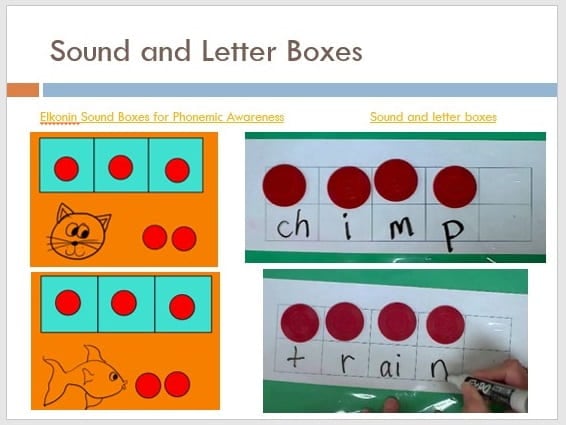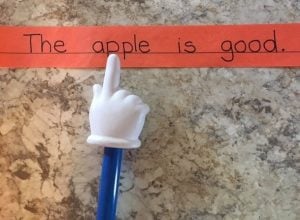by C. Elkins, OK Math and Reading Lady
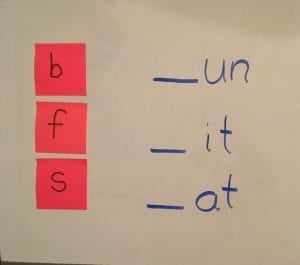
Add beginning letter(s)
Manipulating phonemes refers to the abilty to add, delete, or substitute them orally. This is a prerequisite skill to visually manipulating letters in order to read and write (the phonics part). First grade programs should include both of these routines on a daily basis – and at other grade levels with struggling students. Skill with manipulating letters relates to a child’s ability to use a known word (or word part) to read and write new words. Stay tuned for 10 ways to work on manipulating letters (whole class or small group) as well as some free resources to accomplish your goals. Phonemic awareness falls under the Phonological Awareness umbrella.
Add phonemes – phonemic awareness (examples — letters inside / / represent the sound):
- “Say /at/. Now add /k/ before /at/. What do you hear?”
- “Say /un/. Now add /f/ before /un/. What do you hear?”
Add letters – phonics (examples):
- “Write at. Now add the letter c before at. What word did you make?”
- “What other letters can you add before at to make new words?” (suggest b, f, h, m, p, r, s)
- “Write un. Now add the letter f before un. What word did you make?”
- “What other letters can you add before un to make new words?” (suggest b, g, n, r, s)
Delete phonemes – phonemic awareness (examples):
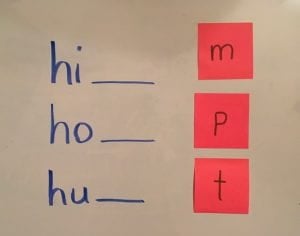
Manipulate ending letter.
- “Say fat. Take off the /f/ sound. What part is left?” (at)
- “Say run. Take off the /r/ sound. What part is left?” (un)
Delete letters – phonics (examples):
- “Write track. Take off the letters tr. What part is left?”
- “What other words can you write with the letters -ack?” (suggest back, smack, lack, tack)
- “Write sting. Take off the letters st. What part is left?”
- “What other words can you write with the letters -ing?” (suggest sing, ring, fling, thing)
Substitute phonemes – phonemic awareness (examples):
- “Say like. Take off the /l/ sound and trade it for the /b/ sound. What word do you hear now?” (bike)
- “Say hop. Take off the /p/ sound and trade it for the /g/ sound. What word do you hear now?” (hog)
Substitute letters – phonics (examples):

Manipulate middle letter(s).
- “Write like. Change the letter l to a b. What word did you write?” (bike)
- “Write like. Change the letter i to the letter a. What word did you write?” (lake)
- “Write like. Change the letter k to the letter f. What word did you write?” (life)
You will notice that manipulating letters also links directly to identification of onsets and rimes.
- With onsets and rimes, we want students to be able to identify the rimes. This means they have to separate it from the beginning of the word. Example: sh + op
- We also want students to be able to recognize and produce the rimes or common “chunks” in other words. This involves deleting and substituting letters. Examples: hop, mop, drop, helicopter. If they can’t hear it, they most likely can’t read it or write it.
Here are 10 ways to work on letter manipulation in the classroom or with small groups:
- Utilize some of the above examples as part of your daily word work routine.
- Use sound boxes and magnetic letters or letter tiles to model manipulation of the letters.
- Use post-its to practice manipulating words.
- Provide word family practice like these rimes -op, -and, -it, – un, -et, eet, -oat, -ine, and so on.
- Give students letter cards to hold and arrange to make / change words.
- Break words apart (and put back together).
- Break apart letter by letter.
- Break apart onsets and rimes
- Break apart beginning / middle / ending
- Explore words by making a word chain. Write it or use letter tiles to help. How long can you make the chain go on?
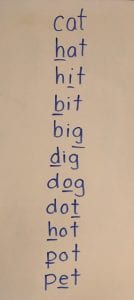
Word chain starting with cat.
- Start with one word such as cat.
- Change just one letter at a time to make a new word (this can be the beginning letter, middle letter, or ending letter): hat
- Change it again (just one letter): hit
- Change it again: bit
- Change it again: big
- Change it again: dig
- Change it again: dog
- Change it again: dot
- Change it again: hot
- Change it again: pot
- Change it again: pet
- Can you keep going???
- Use spelling words to make changes. After all, the purpose of spelling is not to just spell the words on the list, but to apply the generalization to other words. Spelling word is wide? Try these: slide, hide, bride . . . Spelling word is eat? Try these: meat, seat, treat . . .
- Give pairs of students word family lists to partner read (-ake: bake, cake, lake, take, make, rake, snake, shake, wake . . .)
- Check out some of these FREE resources from TPT:
- KG Phoneme Manipulation mini-assessment checklist (FREE): https://www.teacherspayteachers.com/Product/Manipulating-Phonemes-Assessment-Kindergarten-Level-416584
- FREE set of medial letter substitution task cards: https://www.teacherspayteachers.com/FreeDownload/FREEBIE-Phonemic-Manipulation-Task-Cards-Medial-Position-471675
- FREE Building words center idea: https://www.teacherspayteachers.com/Product/Building-Words-Center-Challenge-214571
- FREE word chains with picture cues: https://www.teacherspayteachers.com/Product/Word-Chains-3442664
As always, please share your favorite manipulating phonemes or letters activities!!


